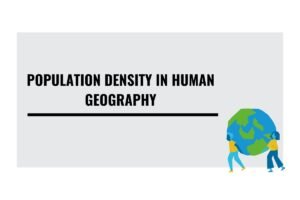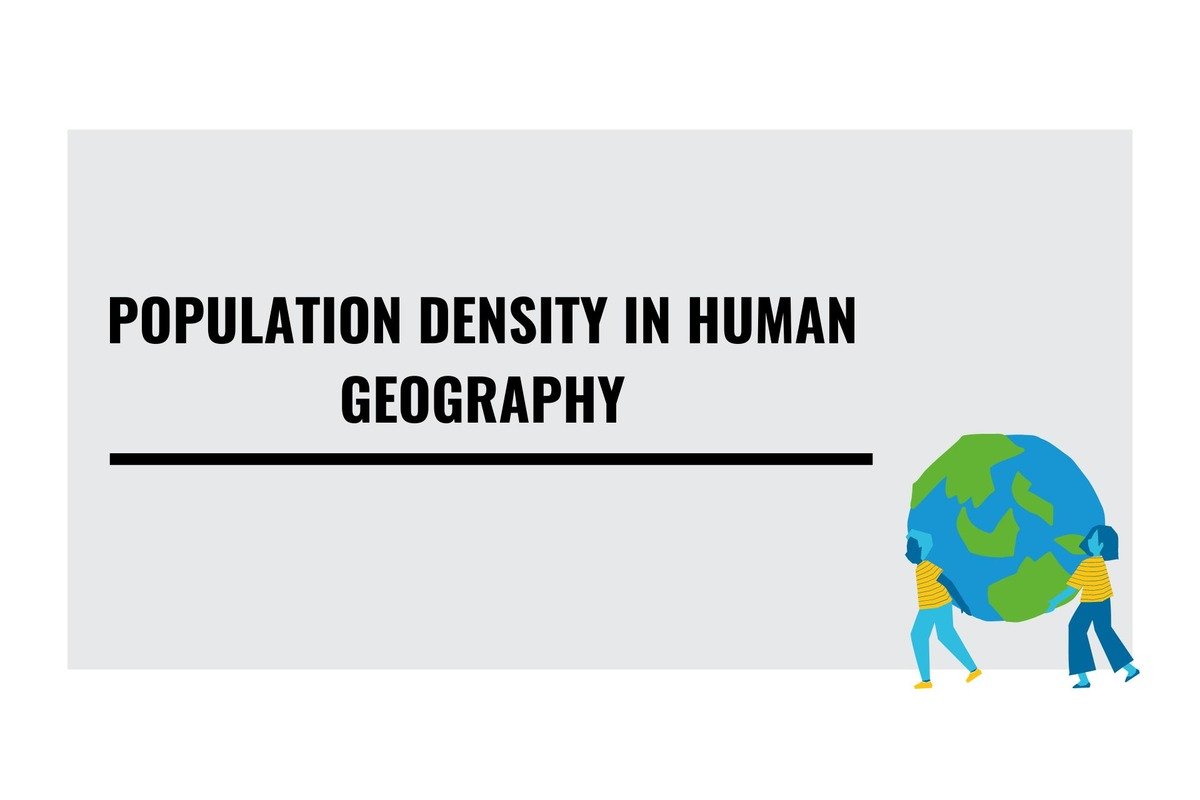1. Exploring Population Density in Human Geography

Population density is a fundamental concept in human geography that refers to the number of people living per unit of area. It plays a crucial role in shaping human settlements, resource distribution, economic activities, and social dynamics. Understanding population density patterns is essential for policymakers, urban planners, and researchers to address various social, economic, and environmental challenges. This article delves into the significance of population density in human geography, explores its patterns globally and locally, and discusses its implications on society and the environment.
2. Introduction to Population Density
What is population density?
Population density refers to the measure of the number of individuals per unit area, typically expressed as persons per square kilometer or square mile. It offers a quantitative assessment of how crowded or sparsely populated an area is.
Importance of studying population density in human geography
Understanding population density is crucial in human geography as it provides valuable insights into settlement patterns, resource distribution, and societal dynamics. By examining population density, geographers can analyze urbanization trends, identify areas of high vulnerability, and formulate effective policy interventions.
3. Factors Influencing Population Density
Natural factors
Various natural factors influence population density, including:
- Climate and topography: Favorable climates and fertile land often attract higher populations.
- Availability of resources: Regions abundant in natural resources tend to have higher population densities.
Human factors
Human activities also play a significant role in shaping population density:
- Economic opportunities: Areas with thriving economies often experience higher population densities due to employment prospects.
- Infrastructure and urbanization: Well-developed infrastructure and urban amenities contribute to higher population concentrations in urban areas.
4. Methods of Calculating Population Density
Population density formula
Population density is calculated by dividing the total population of an area by its land area. The formula is as follows:
Population Density=
For example, if a city has a population of 1 million people and covers an area of 500 square kilometers, its population density would be 2,000 people per square kilometer.
5. Types of Population Density:
- Crude Population Density: Crude population density refers to the total population of an area divided by its total land area. It provides a basic understanding of population distribution but may not accurately reflect population concentrations within specific regions.
- Physiological Population Density: Physiological population density takes into account the carrying capacity of the land by considering the number of people per unit of arable land. It provides insights into the pressure exerted by the population on available resources.
- Agricultural Population Density: Agricultural population density focuses on the number of people per unit of agriculturally productive land. It highlights areas where agriculture is the primary economic activity and where population distribution is closely tied to land suitability for farming.
- Urban Population Density: Urban population density refers to the concentration of people within urban areas, typically measured in residents per square kilometer. It reflects the intensity of urbanization and urban growth, providing insights into issues such as housing, infrastructure, and urban sprawl.
6. Examples of high and low population density areas
High population density areas include megacities like Tokyo, New York City, and Mumbai, while low population density regions encompass remote rural areas and uninhabited expanses like deserts or polar regions.Distribution of Population Density
7.

Population density varies significantly worldwide, with densely populated regions concentrated in areas such as South Asia and parts of Europe, while vast swaths of land, including deserts and tundras, remain sparsely populated.
Regional differences
Within countries, population density exhibits regional disparities influenced by factors like economic development, land use policies, and historical settlement patterns.
8. Effects of Population Density
Social effects
High population density can lead to issues such as overcrowding, increased competition for resources, and strain on social services. Conversely, low population density areas may face challenges related to isolation and limited access to amenities.
Environmental effects
Population density impacts the environment through resource consumption, waste generation, and habitat alteration. Sustainable management practices are essential to mitigate adverse environmental impacts.Urbanization and Population Density
Urban areas and high population density
Urbanization drives population concentration in cities, resulting in high population densities within urban cores. This phenomenon presents both opportunities and challenges for urban planners and policymakers.
Urban planning and management
Effective urban planning strategies are critical to accommodating growing urban populations while ensuring sustainable development, adequate infrastructure, and quality living conditions.
9. Case Studies on Population Density
Example countries or regions with contrasting population densities.
- Japan: Exhibits high population density in urban centers like Tokyo, coexisting with pockets of rural areas with lower densities.
- Australia: Characterized by vast uninhabited expanses alongside densely populated coastal cities like Sydney and Melbourne.
- Challenges and Opportunities
10. Challenges posed by high population density
High population density areas face challenges such as traffic congestion, housing shortages, and environmental degradation, necessitating innovative solutions and effective governance.
Opportunities in areas with low population density
Low population density regions offer opportunities for resource development, tourism, and environmental conservation, provided sustainable practices are implemented.
11. Future Trends in Population Density
Predictions and projections
Demographic trends indicate continued urbanization and population growth in many regions, exacerbating existing challenges related to infrastructure, resource management, and social cohesion.
Implications for policymaking
Policymakers must address the implications of population density on various socio-economic and environmental aspects, emphasizing sustainable development and equitable resource distribution.
12. Conclusion
Population density serves as a key indicator in human geography, offering valuable insights into spatial distribution patterns, societal dynamics, and environmental sustainability. By understanding the factors influencing population density and its effects, policymakers and planners can develop informed strategies to address contemporary challenges and harness opportunities for sustainable development.
FAQs (Frequently Asked Questions)
- What are the primary factors influencing population density?
-
- Natural factors such as climate and topography, as well as human factors including economic opportunities and infrastructure development, influence population density.
- How is population density calculated?
-
- Population density is calculated by dividing the total population of an area by its land area.
- What are the social effects of high population density?
-
- High population density can lead to issues such as overcrowding, increased competition for resources, and strain on social services.
- What challenges do high population density areas face?
-
- Challenges faced by high population density areas include traffic congestion, housing shortages, and environmental degradation.
- What are the future trends in population density?
-
- Demographic trends indicate continued urbanization and population growth in many regions, posing challenges related to infrastructure and resource management.





